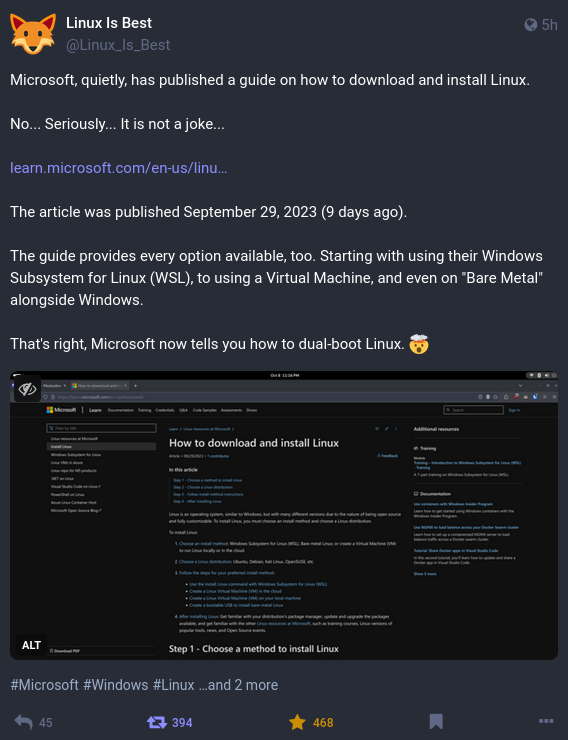this post was submitted on 09 Oct 2023
1835 points (98.2% liked)
Linux
48315 readers
680 users here now
From Wikipedia, the free encyclopedia
Linux is a family of open source Unix-like operating systems based on the Linux kernel, an operating system kernel first released on September 17, 1991 by Linus Torvalds. Linux is typically packaged in a Linux distribution (or distro for short).
Distributions include the Linux kernel and supporting system software and libraries, many of which are provided by the GNU Project. Many Linux distributions use the word "Linux" in their name, but the Free Software Foundation uses the name GNU/Linux to emphasize the importance of GNU software, causing some controversy.
Rules
- Posts must be relevant to operating systems running the Linux kernel. GNU/Linux or otherwise.
- No misinformation
- No NSFW content
- No hate speech, bigotry, etc
Related Communities
Community icon by Alpár-Etele Méder, licensed under CC BY 3.0
founded 5 years ago
MODERATORS
you are viewing a single comment's thread
view the rest of the comments
view the rest of the comments

Another thing they have "slipped" in recently is Linux (only Ubuntu for now) support in Microsoft Intune.
This change will make it possible to run Linux in a Microsoft cloud/azure workplace.
Which is one of the things that people seem to forget about with Microsoft when they think that them pushing Linux is some nefarious plot to kill Linux and get everyone on Windows. At this point, it's like 12% of their total revenue. Not insignificant, but they're likely going to see far more growth pushing products related to Azure, which most instances are going to be running some sort of Linux VMs.
Microsoft saw the writing on the wall a while ago, and knows that the desktop and even embedded environment is a small slice of the computing pie. They would obviously still prefer to own 100% of that, but they also saw that there's a finite number of users and devices that'll use Windows, while there's effectively an infinite number of things that people can put on their cloud services. Even if it has to be a "competing" OS, they're making a shitton of money regardless.